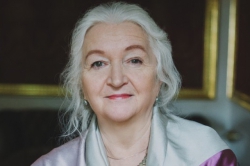The case of Phineas Gage
I’d wager there’s hardly a neuroscience textbook in this world that does not mention this dramatic accident in one way or another (and lately, I was surprised, but not really, to see it mentioned in season 3 of Stranger Things). Phineas Gage was an American railroad construction worker back in the 1840s, whose job was to blast rocks when preparing a roadbed. This was done by laying blasting powder into holes made in the ground and then packing it with tamping iron. Once, when talking to his fellow workers, he turned away from the rod, and, as he was saying something, his tamping iron created a spark which made the powder explode – and the iron pass through his open mouth, behind his left eye and all the way through his head. Phineas himself was thrown on his back, while the iron landed some 80 feet away from the horrible scene. Can you believe that just half an hour later, the man could talk and walk, and it was he himself that greeted the doctor who arrived to treat him?
It was (and continues to be) such a bizarre case that it has sparked quite a lot of interest, as well as some myths. It was said that briefly after the incident, Gage’s personality changed and he became violent and mistreated those close to him – though all of this was proven to be false upon closer examination of notes left by his doctors. Yes, he developed a weird bond with the tamping iron, but otherwise was a well-functioning human, rather affectionate with his nephews and nieces. In my opinion, this makes for a good Halloween story for though it is tremendously scary, especially for those with a vivid imagination, it also demonstrates the wonders of our brain’s plasticity – which is its ability to adapt to changed circumstances and “ascribe” functions to the regions that were not involved in them before.
Is it not from a sci-fi novel?

Credit: x70tjw - CERN, Geneva, particle accelerator / Wikimedia Commons / CC BY-SA 2.0
Truth be told, this story is not something we covered in our cognitive science classes, but rather something I can’t help sharing. The year was 1978 and the Soviet physicist Anatoli Bugorski was having an ordinary day of lab work with the U-70 synchrotron, the largest particle accelerator in the Soviet Union. As he was checking the equipment, a safety system malfunction occurred that resulted in his head being in the way of a 76 GeV proton beam. If this helps as reference, the rest energy of the heaviest known particle, top quark, is 172 GeV. He himself described it as seeing a spark “brighter than a thousand suns” – luckily, he didn’t feel any pain.
Now, in comic books and sci-fi movies, such incidents would typically lead protagonists to develop superpowers (think Hulk or, well, even Spider-Man) or at least telekinesis or the ability to read minds. It would have been rather romantic, no doubt, but I am pretty sure Anatoli would’ve considered staying alive after receiving such an unimaginably high dose of radiation a superpower enough. Or maybe completing his PhD and staying an active researcher to this day – years after the incident occured. This might just be true devotion to science: when your equipment almost kills you, leaving half of your face paralyzed, and you still continue with your research.
The case of patient K.C.

Credit: Payton Tuttle (@paytonctuttle) on Unsplash.com
You might have heard something along the lines of “our memories are stored in the hippocampus” (a small curved formation inside our brains that gets its name from its likeness to a seahorse). Well, this case was one of the first that led scientists to link memory to this deep-seated brain structure.
K.C., or Kent Cochrane, was riding his motorcycle from work at a manufacturing plant in October 1981 when his bike suddenly veered off the road – and after that he could no longer remember anything. His brain suffered an injury in the accident, which led to almost complete hippocampal loss on both sides. He could recognize his mother and his friends, he could also recite some factual information he had learned prior to the accident – but he could remember neither any emotional details of his experiences (such as the death of his brother) nor actually participating in any past events. Most terrifyingly, this led to him not being able to imagine his future, because we base our vision of it on what happened to us in the past (sort of like a collage of everything we’ve ever felt, seen, touched, etc.), and his past was forever lost to him.
Fighting till the end

Credit: Annie Spratt (@anniespratt) on Unsplash.com
Here’s some sad truth: wars tend to be drivers of all fields of science from engineering and physics to medicine and, specifically, anatomy. I could’ve stopped there and it would already have been spooky, but it is only the premise for this last story, the story of Lev Zasetsky. He was a soldier who suffered a severe brain injury in the Battle of Smolensk in 1943. He lost one fourth of his brain matter, with most of it coming from the back left part of his brain (the parieto-occipital area would be the fancy term) resulting in him losing his memory and not being able to differentiate between left and right. At first, he could speak, and his visual perception was limited to only the right side of things. Moreover, he had difficulty relating things and perceiving connections between them at a grammatical level, as in they became indecipherable concepts. However, he had a clear understanding of the changes that had happened to him and decided to fight all of those disabilities as best he could.
After years and years of therapy and training, he became better at navigating the “shattered world” that he found himself in. He also started to journal a page a day, documenting his small successes, his feelings, and his attempts to make sense of the world around him. His journal is considered a unique contribution to the study of consciousness, presenting us with a chance to look into the eyes of not fear but endless perseverance and a will to live.
I tried to end this Halloween-themed piece on a light note, but if you wish to get some real shivers – head over to our spooky cartoon guide or a goosebump-inducing piece on Russian children horror stories.




